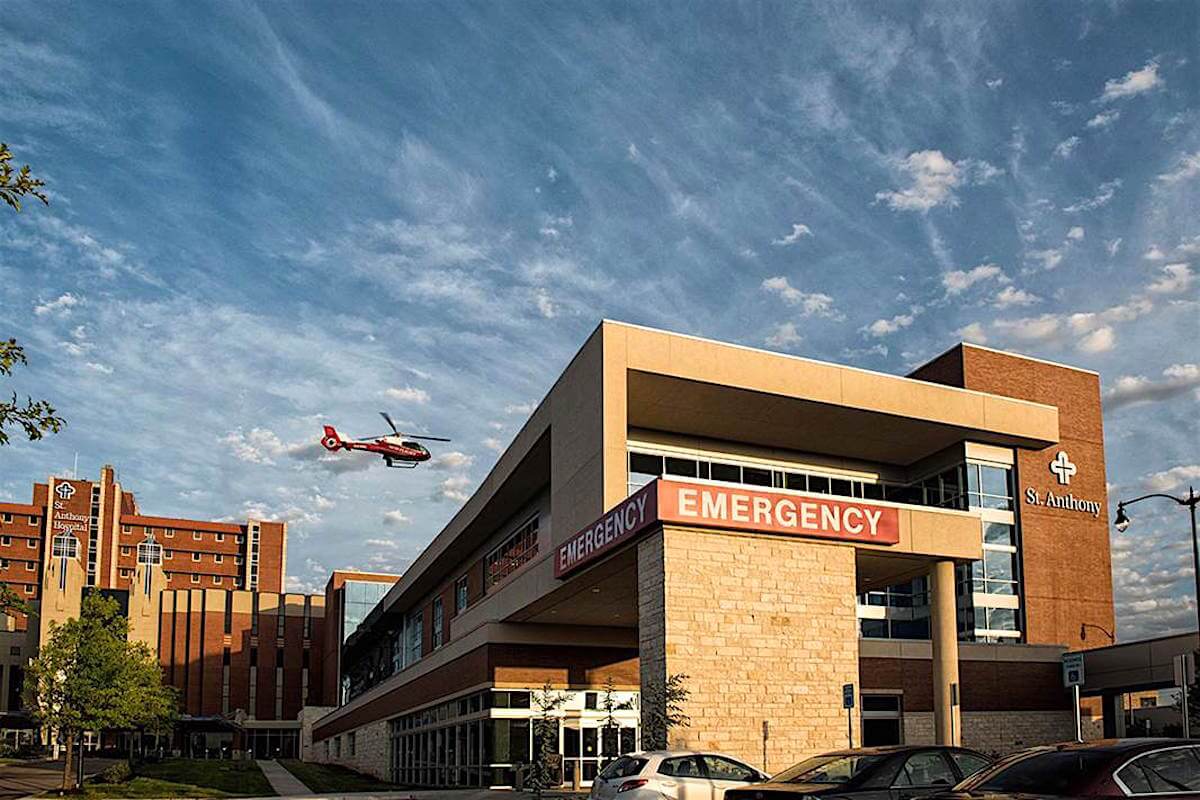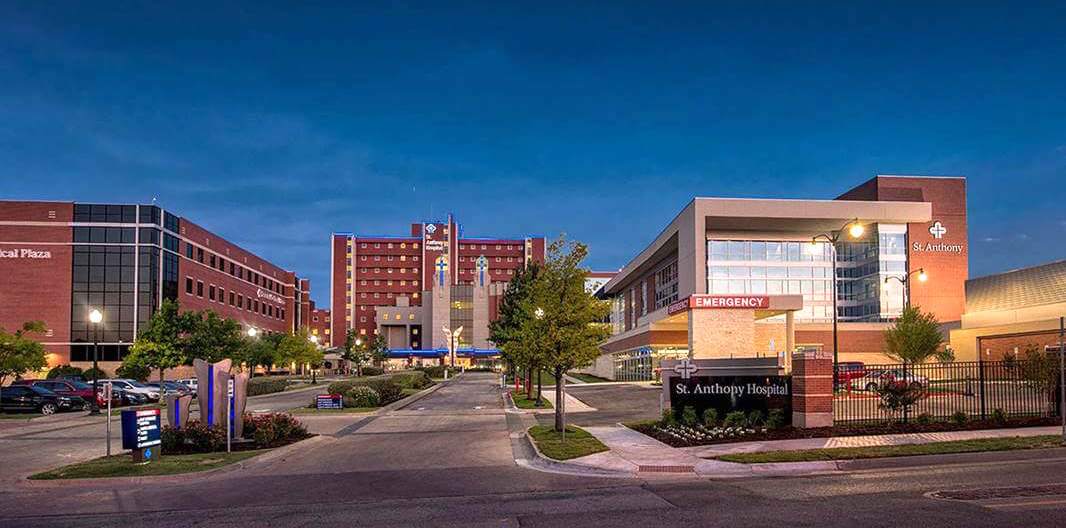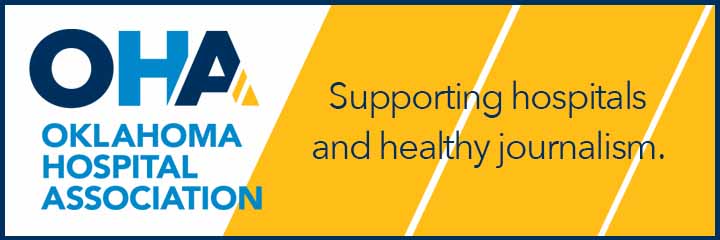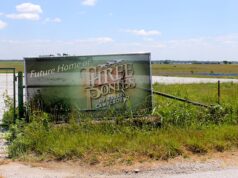
Visitors to Midtown OKC today find an atmosphere of energy and excitement — the result of almost 12 years’ work by local businesses, developers and neighbors.
In 2003, Midtown had very different vibes. Many businesses had vacated properties, streetscapes were not pedestrian-friendly and dilapidated structures were common visual clues that Midtown had seen better days.
The neighborhood’s condition left officials at St. Anthony Hospital wondering whether continued investment in the area was viable or whether a suburban location would be better for the hospital that had spent more than a century serving patients in central OKC.
‘People were moving out’
Dr. Iftikhar Ahmad, a cardiologist, joined St. Anthony in the 1980s when the hospital was thriving and considered to be the best place to practice in his field. He recalls, however, when things started to turn.
“The area started to change. People were moving out into the suburbs, so the surrounding area started to go down and businesses left,” Ahmad said. “And for one reason or another, the doctors also started to leave. People would come up to me and say, ‘OK, are you going to come with us, or are you going be the last man standing and you’ll turn the switches off?’ I said, ‘Well, I’m going to take my chances.'”
Former OKC Mayor Kirk Humphreys remembers the time as a challenging one. While the hospital was considering a move out of Midtown, Humphreys was called upon to meet with several St. Anthony doctors to persuade them to stay in the core of the city.
“It was the most difficult meeting I ever had as Mayor,” recalled Humphreys. “They’re used to dealing with life-and-death issues every day, and here’s this elected official who’s coming to talk to them about don’t relocate your hospital.”
As the result of planning and collaboration with the City of Oklahoma City and investors who believed in the future of Midtown — including developers Bob Howard and Mickey Clagg, in 2004 — the hospital announced its plans to remain in its current location and invest $220 million in a campus expansion project.
Healing the built environment
Recognizing the value of enhancing the healing environment for patients and families, the hospital committed to campus beautification efforts as well as numerous building projects. One of those efforts was establishing a close working relationship with the City of Oklahoma City on projects designed to enhance the area’s streetscapes.
Momentum started to grow.
In August 2006, a $30 million state-of-the-art surgery department opened on the hospital’s fifth floor. An outdoor garden and spacious waiting areas welcomed family members while they waited for their loved ones in surgery. All around Midtown, construction and detours became common — all signs of progress.
In September 2008, a new gateway to the St. Anthony campus opened on its east side with a boulevard-style entrance from Walker Avenue. The four-story Saints Medical Plaza building opened with physician offices, a Walgreens and a Starbucks.
That same month in 2008, the City of Oklahoma City completed final touches on the streetscape projects along 10th Street. Many restaurants caught the Midtown excitement and started moving in, including 1492 New World Latin Cuisine, Irma’s Burger Shack, Stella, McNellie’s, Prairie Thunder and many more. The Midtown YMCA opened in Plaza Court, and residential development sprouted in the area.

Branching out from Midtown OKC
While Midtown’s revitalization and St. Anthony’s campus renovations continued to take shape, the hospital began to look for ways to reach further into the community. In January 2012, St. Anthony opened two medical campuses that offer convenient access to a wide range of services for the residents of east and south Oklahoma City.
St. Anthony Healthplex East, at I-40 and Douglas Boulevard, and St. Anthony Healthplex South, at I-44 and S.W. 134th Street, include the state’s first freestanding 24/7 full-service emergency rooms, diagnostic imaging, sleep center, women’s center, laboratory and primary care and specialty physicians. The facilities feature a striking architectural design with soothing interior touches.
In 2014 and 2015, respectively, St. Anthony opened St. Anthony Healthplex campuses in Mustang and North Oklahoma City.
An additional focus outside St. Anthony’s downtown anchor location is a network of 17 affiliated hospitals. St. Anthony Shawnee Hospital joined the St. Anthony family in 2012, expanding the healing ministry to the residents of Shawnee and surrounding communities.

A Pavilion rises
Just this past June, St. Anthony Hospital opened its new Pavilion in Midtown.
Located on the east side of the campus, the four-story Pavilion represents the crowning achievement of the hospital’s $220 million campus-expansion plan, said Tammy Powell, president of St. Anthony Hospital.
“We are excited about the Pavilion completion, as it represents significant enhancements for the benefit of our patients,” Powell said. “Our new emergency room, intensive-care units and progressive-care unit expand our capacity to accommodate the growth of patients seeking care through our statewide rural affiliate network and four St. Anthony Healthplex campuses in Oklahoma City.
“The facility features many medical advancements to improve upon the exceptional care we provide as well as improve the patient and visitor experience.”
Key features of the new emergency room include three specially designed rooms for patients who require a behavioral medicine assessment. Direct staff observation into these exam rooms provides a more comfortable, compassionate setting for patients.
Additionally, a CT scanner located within the ER allows for faster diagnosis and enhanced patient convenience. Lab specimens are efficiently transported to the main lab in a new pneumatic tube system to reduce turnaround time. The Pavilion also has a rooftop helipad that allows quick transfer of patients to either the ER or intensive care. In total, Powell said the new ER is nearly three times the size of the former ER.
On the Pavilion’s upper floors, the state-of-the-art intensive-care unit and progressive-care unit feature ceiling mount lifts in every other room to improve safety for patients and staff. High-end finishes promote a soothing and upscale healing environment and visitor experience. Spacious waiting areas with multiple seating areas and ample light are also comfortable for families. Nurses’ stations between rooms have windows with integrated blinds that allow visual checks without disturbing patients.
In all, the Pavilion stands amid a revitalized neighborhood, of which the hospital is an integral part.
“What’s really exciting about the change in Midtown is it isn’t just St. Anthony (that) created this,” said Joe Hodges, SSM Health of Oklahoma Regional President. “Yes, we were the impetus. We stayed. We started reinvesting in our facility. That created synergy with everything else that’s happened in Midtown.”




















